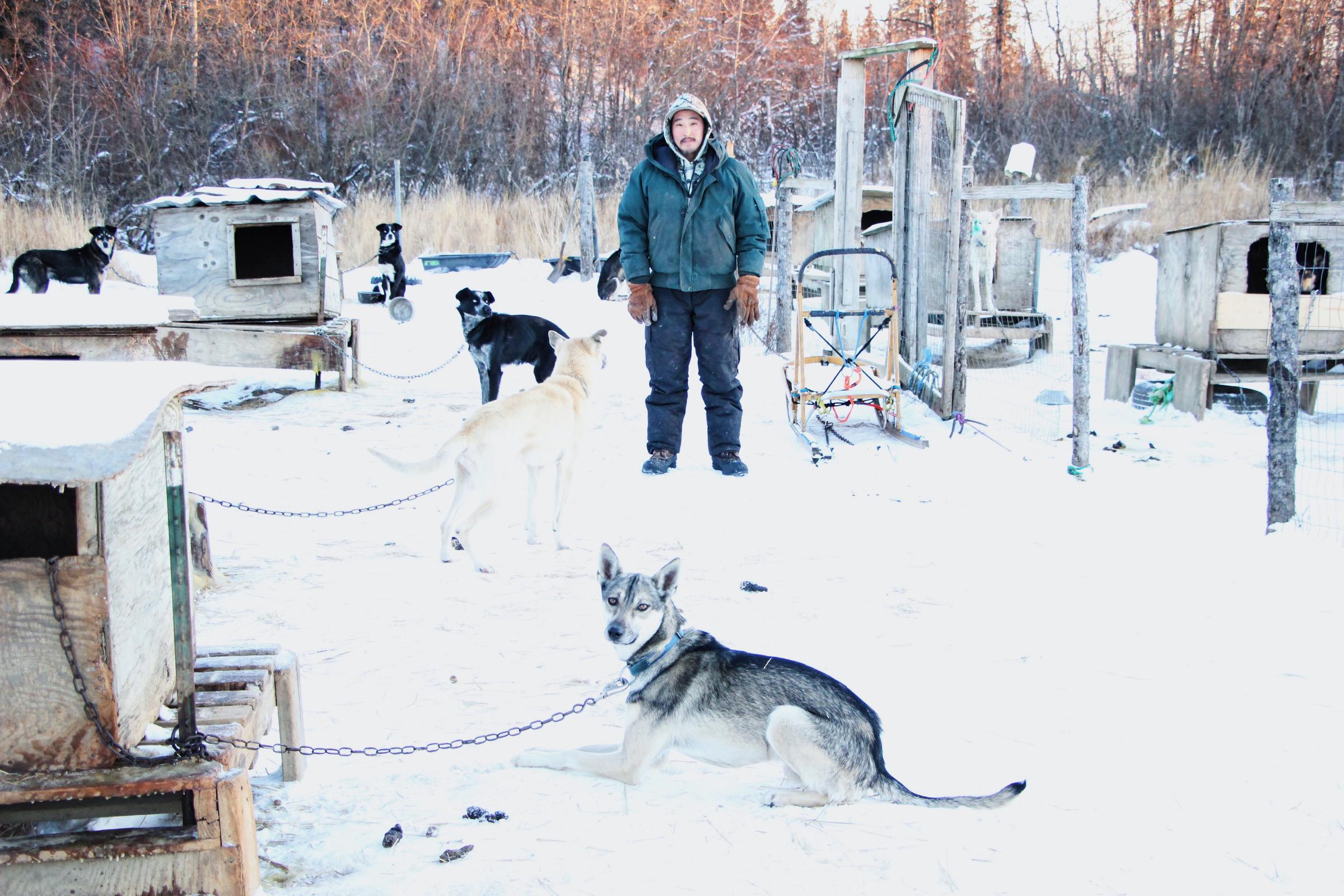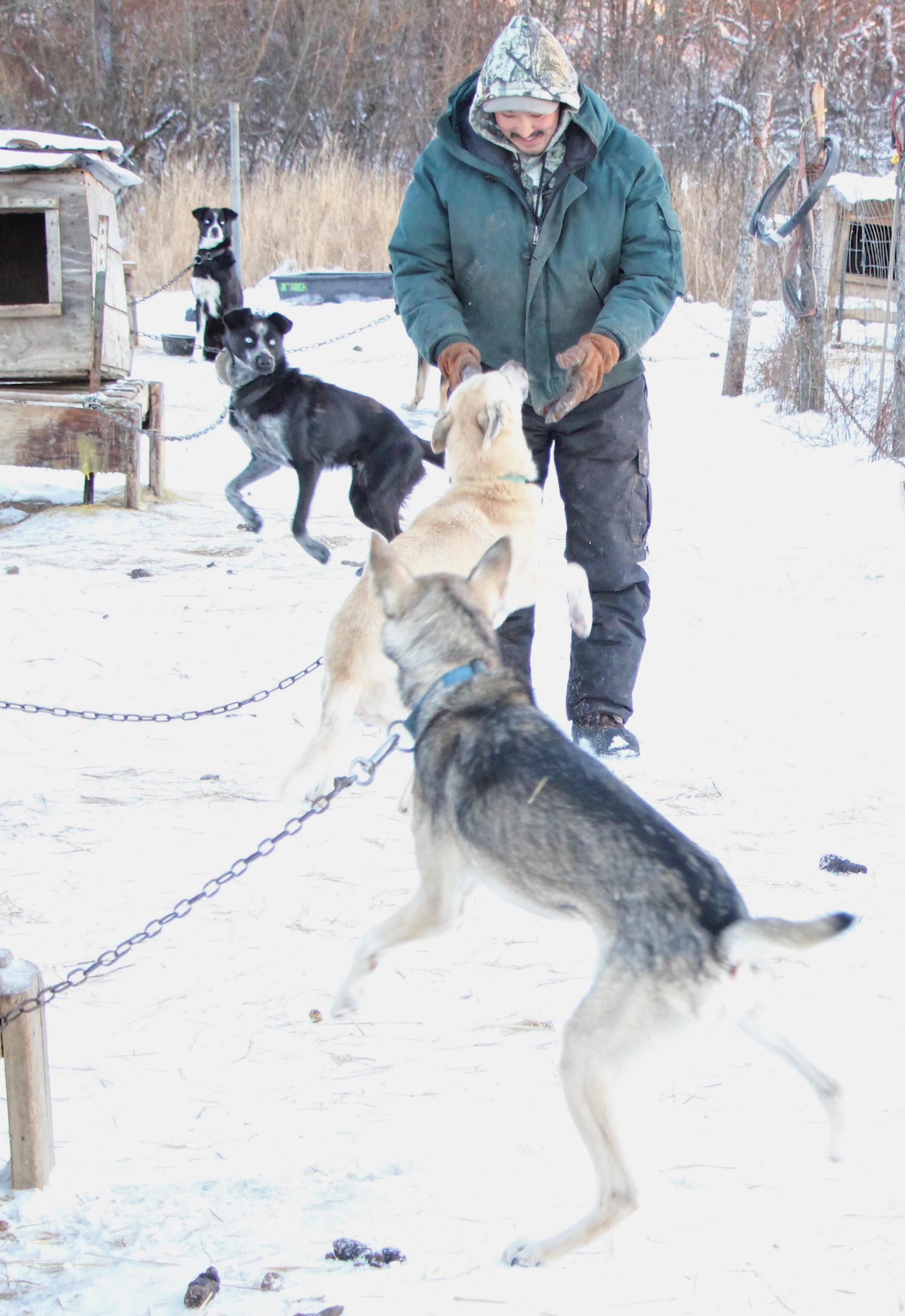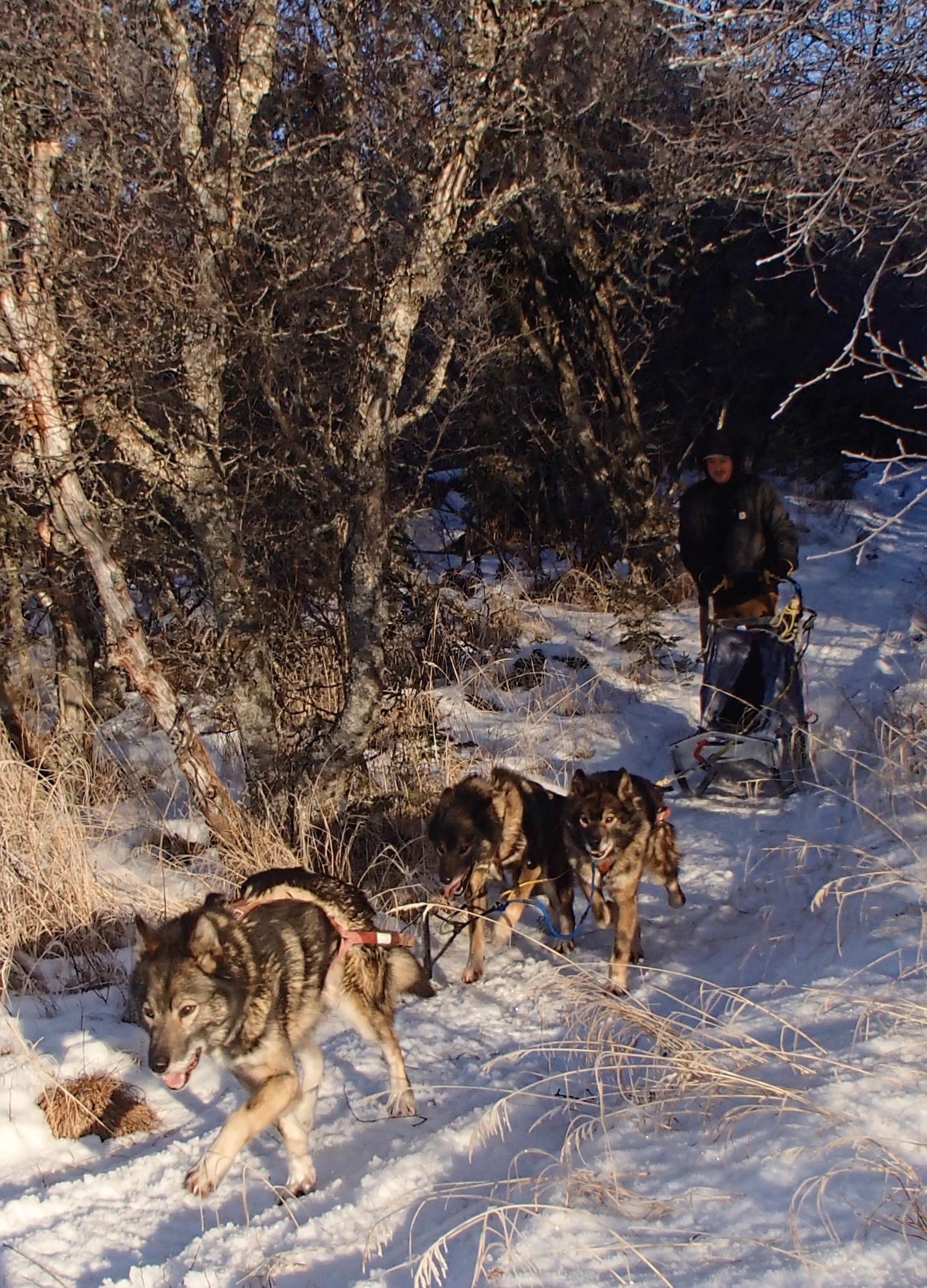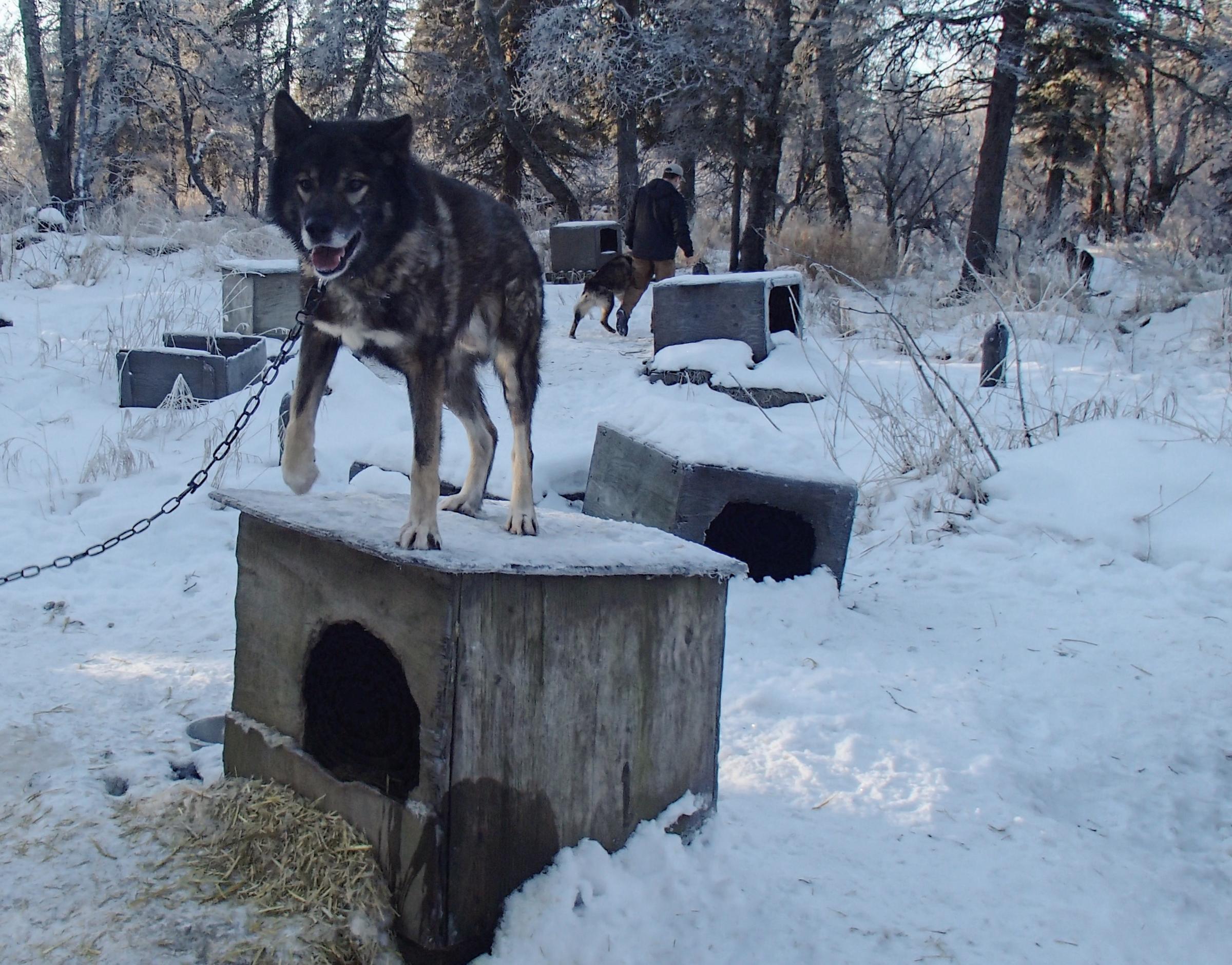
Dozens of canines howl in John Hanson Jr.’s dog yard, excited by the sound of a snow machine pulling up to the kennel.
Hanson is one of a handful of dog mushers in New Stuyahok, probably the most active mushing community in a region that has watched participation in the tradition dwindle.
“These other mushers are elderly mushers, and they were in it for 40, 50, 60 years or more,” Hanson said. “I don’t see any other young mushers around in the Bristol Bay region getting involved in dog mushing.”

Part of the reason, Hanson said, is that dogs are a lot of work. Hanson collects food scraps from neighbors every day. The aroma of fish and moose guts in the steel drum where he cooks the dog’s food is pungent.
When there’s snow, he runs the dogs on a sled. When there isn’t, the dogs pull him on a four-wheeler.
For Hanson, caring for dogs is a full time job. He lives on money from sponsors and dividend checks from the state’s Permanent Fund and the native corporation. But it’s an uncertain income, and local sponsors have been hard to come by lately. It’s been a few years since weather has allowed a race in Bristol Bay, and he’s not optimistic that this year will be any better. Without races, people and businesses close to home are less interested in sponsoring their local mushers.
Hanson looks elsewhere for sponsors, like to the Yukon-Kuskokwim Delta, so his team can fly to races. He said there are plenty of races in the Kuskokwim, adding that he believes interest in the sport there is growing, not declining.

Kyle Belleque keeps three older sled dogs in Dillingham. His dogs might be 12-years-old, but they still love to pull. As they cut their way across the frosty tundra one recent afternoon, Belleque said he feels at home with his dogs, outside of a snow-machine’s bubble of noise and exhaust.
Belleque has run a few races, but started mushing more for its connection to days gone by. He likes the idea that before it was a sport, many families in the area kept dogs as draft animals.
“That’s how they hauled wood,” Belleque said. “That’s how they went hunting. That’s how they traveled. That’s how they did everything. When I was growing up here in the 70s, 80s, and 90s, there were dog yards all over the place.”
Better roads and more snow machines turned dog sledding into more of a hobby than a necessity. Belleque also believes the decline can be attributed to a time in the 70’s when people first began importing dogs for racing.

“They imported all the other things that came with dogs, and among that was disease,” Belleque said. “There were massive die-offs in the villages. Some guys lost their entire genetic line to parvo and distemper.”
And then came the recent years without snow.
“In the last three years it was darn near treacherous,” Belleque said. “And this year it’s not that bad. Although, I fell in some creeks back here behind the house a couple of weeks ago.”
Belleque has kept dogs for his entire adult life. Despite his love of mushing and his passion for its history, the empty wooden kennels in his dog yard show that even he has sold or given away most of his team.
“What happened to mushing? You know, it’s what happens to a lot of old things. They just get replaced,” Belleque said, scratching his dog’s head as it noses his hand. “I think the weather has been kind of the nail in the coffin, at least in Bristol Bay.”




